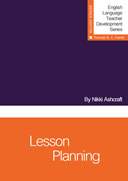Quick Tip: Just Say Yes! Practice Pronouncing -ed Endings
by Eve Nora Litt
Audience: Intermediate-level learners
This activity can be used to warm up a class and reinforce instruction on the three sounds of –ed endings: /ɪd/, /t/, and /d/. Students can often categorize the sounds by distinguishing whether the end sound is voiced or unvoiced or if it simply ends in /t/ or /d/, but in context, students tend to overuse /ɪd/ if they mark it as past tense at all. (Before you try this activity, ensure your students have a basis for pronunciation: Here is a great primer on the basics of pronouncing –ed.) This interactive activity engages the speakers as listeners first, before making choices as speakers.
Have students arrange their desks in two rows facing each other, so that students are facing partners. One row is facing the board, and the other row is facing away from the board. Using PowerPoint, an overhead projector, or a SMART board, project a past tense question on the board. For example, “Did you brush your teeth today?”
Tell your students that the answer must always be “yes,” and they must respond with the long answer, not the short. For instance, they should say, “Yes, I brushed my teeth today,” and not, “Yes, I did.” The challenge for students is to listen to their partner ask the question, identify the main verb, identify the past tense sound it makes (/d/, /t/, or /ɪd/), and then form their answer.
After about six to eight questions, ask the students to switch chairs, so that the student who was asking the questions is now answering the questions and vice versa. It’s also a way to reinforce yes/no question intonation.
When you design the questions, make sure that all of the endings are represented. You can also try to have a little fun by including student names or things that have happened in class. For example, “Did Roberto talk to himself in class this morning?”
Here are some example questions:
Did you order pizza for this class this morning? /d/
Did you want to sleep in this morning? /ɪd/
Did you like taking the test yesterday? /t/
Did it rain at your house this morning? /d/
Did you need an alarm to wake up this morning? /ɪd/
Did you kiss a dog on the way to school? /t/
SWITCH ROLES
Did you fix Maya’s cell phone for her? /t/
Did you and Juan visit the zoo this morning? /ɪd/
Did you study last night for the test? /d/
Did you watch a scary movie last night with Chen? /t/
Did you Skype your parents last night? /d/
Did you decide to move to another city last night? /ɪd/
During the task, you can walk behind the students, listen to their –ed endings, and offer feedback individually. After the task, a quick review of the sounds with the whole group to ensure understanding is helpful.
____________________
Eve Nora Litt is a language specialist at the University of Pennsylvania’s English Language Programs. She teaches mostly in the Intensive Programs, and she enjoys increasing student-talk and employing informal assessment.
TESOL Blogs
Interested in writing a blog for TESOL?
Contact
Tomiko Breland with your idea or for submission details.
Check out the latest TESOL Blogs, including our newest bloggers, writing on secondary education; adult education; teacher education; and speech, pronunciation, and listening:
|
Finding Common Ground in Multicultural Classrooms, by Nathan Hall
 Think back to the first day of a new school year. It’s late summer, but you feel cold and uncomfortable. You don’t know the boy to your right or the girl behind you, or even the teacher. You start to think about how different you look from the rest of the students and spend so much time wondering what they think of you that you don’t form many opinions about them. And then the teacher says it’s time for everyone to introduce themselves. You may have experienced this with the added level of not having a common language—or least not one you spoke or understood well—with classmates who have different accents. Read More. Think back to the first day of a new school year. It’s late summer, but you feel cold and uncomfortable. You don’t know the boy to your right or the girl behind you, or even the teacher. You start to think about how different you look from the rest of the students and spend so much time wondering what they think of you that you don’t form many opinions about them. And then the teacher says it’s time for everyone to introduce themselves. You may have experienced this with the added level of not having a common language—or least not one you spoke or understood well—with classmates who have different accents. Read More.
|
|
Options in Classroom Self-Assessment, by Robert Sheppard
 I’ll be honest: It took me a while to come around to the notion of self-assessment. All I could picture was my sneeringly too-cool high-school self giving my apathetically underachieving high school self A+ after unearned A+. I’ll be honest: It took me a while to come around to the notion of self-assessment. All I could picture was my sneeringly too-cool high-school self giving my apathetically underachieving high school self A+ after unearned A+.
Can we really trust students to assess themselves? Is a student’s assessment of her own progress or performance reliable? Is it valid? If reliability and validity aren’t guaranteed, then what’s the point? These are important questions to ask, but as long as we think of assessment not just as a tool for bureaucracy and accountability but as an opportunity to empower our learners, and as long as we keep an eye to its limits and its role in a broader assessment system, then such self-assessment is most certainly a worthy undertaking. Read More. |
|
Reading Challenges for ELs in the Age of the Common Core, by Judie Haynes
 Learning to read in English presents many challenges for English learners (ELs) in the K–12 classroom, especially true in this age of high stakes standardized testing based on the Common Core State Standards (CCSS). ELs face many obstacles when reading in English. Most literature taught in K–12 is culture bound. Teachers expect all students to have prior knowledge of literary genres such as fairy tales, myths, legends, and tall tales. If the teacher has not built background information, ELs who have learned phonics may be able to read the words, but that doesn’t mean they will understand the text. Read More. Learning to read in English presents many challenges for English learners (ELs) in the K–12 classroom, especially true in this age of high stakes standardized testing based on the Common Core State Standards (CCSS). ELs face many obstacles when reading in English. Most literature taught in K–12 is culture bound. Teachers expect all students to have prior knowledge of literary genres such as fairy tales, myths, legends, and tall tales. If the teacher has not built background information, ELs who have learned phonics may be able to read the words, but that doesn’t mean they will understand the text. Read More.
|
|
Blogging for Learning in TESOL Teacher Ed, by Kristen Lindahl
 Storytelling is one of the most powerful human language acts, and now it may be one way to help TESOL teachers process and retain information. We know that teachers’ life experiences and beliefs are some of the biggest contributors to their practices (see Johnson, 2009), but creating time for teachers to verbalize these experiences and beliefs, let alone acknowledge and reflect upon them, can be challenging for teacher educators. Teaching English worldwide in all its dimensions—political, social, economic, theoretical—may cause beliefs to surface and influence teacher decisions, some of which they may not even be aware. Read More. Storytelling is one of the most powerful human language acts, and now it may be one way to help TESOL teachers process and retain information. We know that teachers’ life experiences and beliefs are some of the biggest contributors to their practices (see Johnson, 2009), but creating time for teachers to verbalize these experiences and beliefs, let alone acknowledge and reflect upon them, can be challenging for teacher educators. Teaching English worldwide in all its dimensions—political, social, economic, theoretical—may cause beliefs to surface and influence teacher decisions, some of which they may not even be aware. Read More.
|
TESOL Bookstore

New from TESOL Press
 Fostering International Student Success in Higher Education
Fostering International Student Success in Higher Education
Shawna Shapiro, Raichle Farrelly, and Zuzana Tomaš
This book enlightens college faculty and TAs to some of the needs of international students using quotes, anecdotes, and reflection questions as well as specific strategies, resources, and activities that serve as tools for responding to common instructional challenges.
 Lesson Planning
Lesson Planning
Nikki Ashcraft
Effective teaching begins with effective lesson planning. This easy-to-follow guide discusses the many approaches to lesson planning, addresses both theoretical and practical issues, and provides sample lesson plans and examples.
 Language Teaching Insights From Other Fields: Psychology, Business, Brain Science, and More
Language Teaching Insights From Other Fields: Psychology, Business, Brain Science, and More
Christopher Stillwell
The second in the series, this book is, at heart, a book about exploration and about seeking inspiration from beyond routine contexts. The chapters, written by language teachers with extensive experience in other fields, yield surprises that translate to new ways of thinking about teaching and the classroom. Language teachers who open this book tap into a living library of their colleagues' knowledge and experiences.